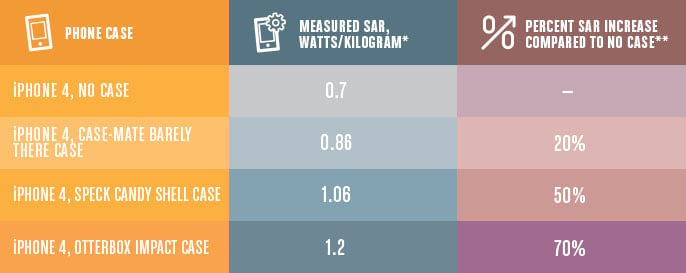Cell Phone Cases Can Increase Radiation Exposure Up To 70 Percent
Cell Phone Cases Can Increase Radiation Exposure
The Environmental Working Group issued a press release and a report on a study that has important implications. Not only are the FCC's cell phone certification testing procedures inadequate to protect consumer safety, the cell phone manufacturer's safety instructions fail to warn the consumer that some cell phone cases may significantly increase the user's exposure to microwave radiation.
Legislation may be needed to ban the sale of cases that increases a cell phone's Specific Absorption Rate (SAR). At the very least, warning labels should be required on these cases. Some cell phones may exceed the SAR legal limit of 1.6 watts per kilogram when used with certain cases.
The White House must end the diffusion of responsibility among government agencies and between government and the Telecom industry as public health and safety are at risk. The Federal Communications Commission, the Food and Drug Administration, and the Federal Trade Commission should immediately address all of the health and safety risks associated with cell phone use.
In 1996 when the Federal government adopted the legal limit for cell phone radiation exposure, the Environmental Protection Agency and the National Institute for Occupational Safety and Health lobbied for 1.0 watts per kilogram. However, industry and military lobbyists prevailed in getting Congress to adopt the more permissive limit of 1.6 watts per kilogram.
Table 1: Cell phone cases can significantly increase radiation exposure

*SAR values are from tests conducted by Pong Research Corp on March 29, 2012 and submitted to the FCC on May 31, 2012. Because the SAR values were submitted to the FCC in graph form, EWG estimated numerical SAR values based on the chart available in WT Docket 11-186 (http://apps.fcc.gov/ecfs/
** Percent SAR increase rounded to the nearest decile.
For more information see: http://bit.ly/** Percent SAR increase rounded to the nearest decile.
--
Joel M. Moskowitz, Ph.D., Director
Center for Family and Community Health
School of Public Health
University of California, Berkeley
Electromagnetic Radiation Safety
Website: http://www.saferemr.com
Facebook: http://www.facebook.com/SaferE
News Releases: http://pressroom.prlog.org/
Twitter: @berkeleyprc
No comments:
Post a Comment